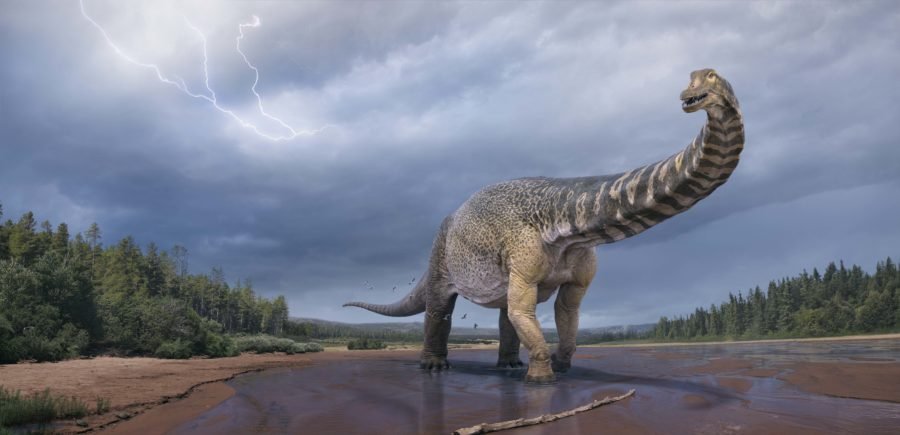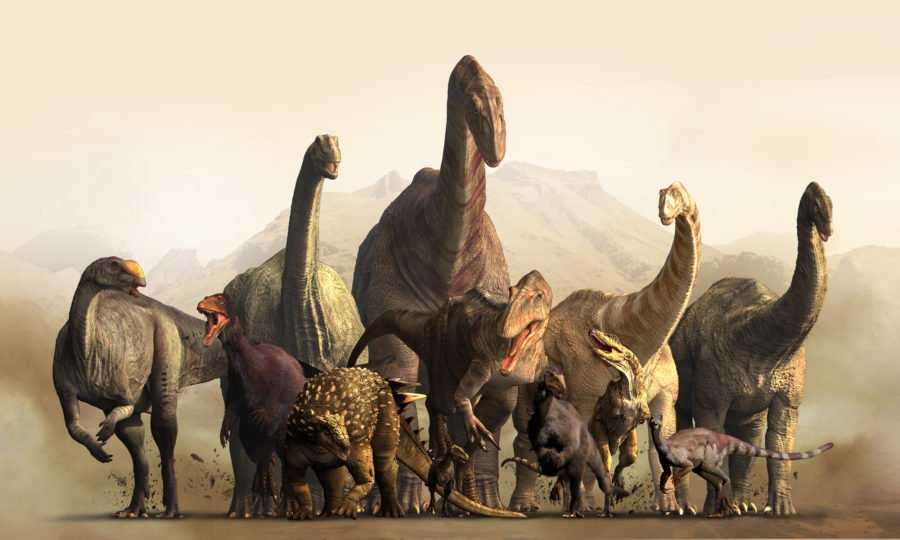Australia’s largest dinosaur ‘Australotitan’ discovered

Queensland paleontologists have announced the discovery of Australia’s largest dinosaur, named ‘Australotitan’ and coming in at a whopping 6.5 metres tall and up to 30m in length.
The fossil remains of the new species of giant sauropod, which lived during the Cretaceous period, were discovered in Eromanga in south-western Queensland in 2006.
It took the Eromanga Natural History Museum 15 years to excavate the bones. They initially had no idea what they’d unearthed.
“The first bone that we prepared was the humerus and it was 1.5m,” says Queensland Museum palaeontologist Dr Scott Hocknull. “That’s an enormous bone, so we knew it was bigger than the guys in Winton but we weren’t sure if it was a new species.”
Not only was it a new species, palaeontologists say it may be among the top five biggest dinosaurs the world has ever seen.
“If you were going to use a sporting analogy you’d say we’ve hit the big leagues now,” Scott says. Previously, Australia was only known for its small to mid-size dinosaurs.
Titanosaurs, a type of sauropod, had only been unearthed in South America and are known to be the largest ever land-dwelling animals.
It’s large size, Scott says, compared to the sauropods found in Winton 800km to the north “paints the picture of quite a different dynamic 95 million years ago.”
Remains of Australotitan and the sauropods of Winton all come from the same rock formation, however, scientists are unsure as to whether or not they coexisted.
“They were either related to one another in time and one involved into the other… or perhaps they all evolved into different niches.
“I use the analogy of the Okavango Deltain Africa. It’s a continental basin similar to what Queensland would have been back in the time of the dinosaurs. It’s got mega herbivores like elephants and hippos doing different things, but if you took their heads off their skeletons and just looked at the back of their bodies all of them look the same but in different proportions.
“Elephants are tall and wide, hippos are short and stocky, and you can see from their different ecologies that they inhabit different parts of the habitat, which is what could have been happening with the sauropods millions of years ago.”
Australia, last dinosaur frontier
According to Scott, most frontiers of dinosaur discovery, like South America, have been fully established. Australia on the other hand, he believes, will yield exciting finds for years to come, especially in Eromanga.
“Australia is the last frontier on the basis that we have such huge areas where dinosaurs could be found and zero effort has been made to go and look for them.
“When you think about the layer of rock that the dinosaurs of Winton and Eromanga have been found in…. That rock is almost 1000m thick and it spans from central Queensland all the way down to northern NSW to north-east South Australia around Lake Eyre. That whole area is potential dinosaur country.
“The bones out here come to the surface, so you find what the ground wants to give you and you don’t know what it is, so you treat every site like it’s a new discovery.”


